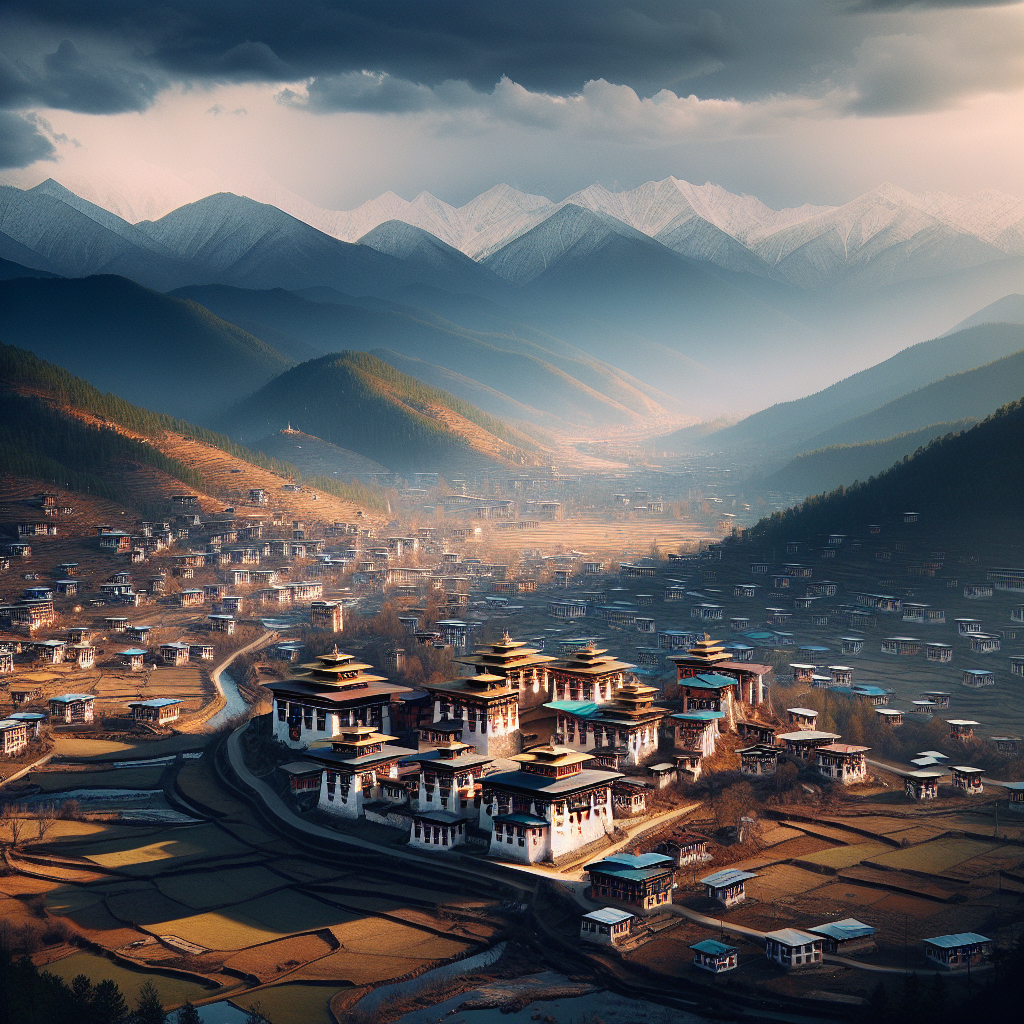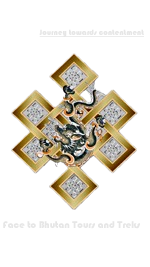Ancient History
Bhutan’s history, intertwined with mythology and folklore, begins with small Himalayan kingdoms existing as early as 2000 B.C. Its early records are unclear, but Buddhist scriptures and oral traditions reveal that Buddhism spread in Bhutan as early as the 7th century. Tibetan Buddhism’s influence increased when King Songtsen Gampo of Tibet, an ardent follower, ordered the construction of temples in Bhutan, including Kyichu Lhakhang in Paro and Jampa Lhakhang in Bumthang, marking the formal entry of Buddhism into the region.

The Arrival of Guru Rinpoche (8th Century)
In the 8th century, the legendary Indian saint Guru Padmasambhava (Guru Rinpoche), credited as the second Buddha, visited Bhutan. He is considered to have subdued evil spirits, sanctified the land, and established Buddhism firmly in Bhutan. His teachings and legends are integral to Bhutanese culture and spirituality. Guru Rinpoche is also associated with the creation of sacred sites and practices still honored in Bhutan today.
The Emergence of a Unified Bhutan (17th Century)
Before the 17th century, Bhutan was a collection of warring valleys and tribes. In the 1620s, Zhabdrung Ngawang Namgyal, a Tibetan lama fleeing political unrest, united Bhutan under his rule and established it as a distinct political and cultural entity. He introduced the dual system of governance, combining secular and religious authorities, a system that remained in place until the 20th century.
Key developments under Zhabdrung’s rule included:
- Dzong Architecture: Zhabdrung initiated the construction of massive fortress-monasteries, known as dzongs, which functioned as administrative and religious centers. These dzongs, like Punakha Dzong and Paro Dzong, are now iconic symbols of Bhutanese heritage.
- Religious Cohesion: Zhabdrung promoted the Drukpa Kagyu school of Buddhism as the state religion, which fostered unity and a strong sense of national identity.
- Legal and Administrative Framework: He established a centralized government, introduced a legal code, and crafted a political framework that solidified his authority over the region.
After Zhabdrung’s death in 1651, Bhutan entered a period of internal conflicts and power struggles, with the country often splintering into competing regional factions.
Civil Conflicts and Tibetan Incursions (17th-19th Century)
Following Zhabdrung’s death, Bhutan endured political instability, with various factions vying for control. The rivalry led to prolonged civil wars and periodic Tibetan incursions. Tibet attempted several invasions, but Bhutan’s defenses held, and it retained its sovereignty. During this period, external influence remained limited due to Bhutan’s geographical isolation and a self-imposed policy of isolationism.
Relations with the British (18th-19th Century)
In the 18th century, Bhutan’s borders came into contact with British-controlled India. Tensions escalated over territorial disputes, especially in the Bengal Duars and Assam Duars regions, leading to the Duar War in 1864. The British won, and the subsequent Treaty of Sinchula in 1865 forced Bhutan to cede control of the disputed regions to the British in exchange for an annual subsidy.
The Duar War marked the start of Bhutan’s formal relations with British India. Although Bhutan lost some territory, it maintained autonomy over its internal affairs, a significant factor in preserving its sovereignty.
The Establishment of the Monarchy (1907)
In 1907, amid ongoing internal strife and with the support of influential Buddhist lamas and the British government, Ugyen Wangchuck was elected as Bhutan’s first hereditary king, establishing the Wangchuck Dynasty. This event unified the country and marked the end of the dual governance system. Bhutan’s monarchy focused on bringing stability and modernization while preserving Bhutanese traditions.
The monarchy maintained friendly relations with British India and later with independent India, ensuring Bhutan’s autonomy and protection from external threats. In 1910, the Treaty of Punakha reaffirmed Bhutan’s independence while allowing Britain to guide Bhutan’s foreign relations.
Bhutan’s Modernization and Relations with India (20th Century)
When India gained independence in 1947, Bhutan immediately sought to establish strong diplomatic ties. The Treaty of Friendship between India and Bhutan in 1949 secured Bhutan’s territorial integrity, with India assuming a protective role in foreign affairs. This treaty laid the groundwork for a close and mutually beneficial relationship between the two countries.
In the 1950s, under King Jigme Dorji Wangchuck (the third king), Bhutan began to cautiously open up and modernize:
- Infrastructure Development: Roads, hospitals, schools, and basic infrastructure were built, improving the quality of life for many Bhutanese.
- Abolition of Serfdom: King Jigme Dorji Wangchuck abolished serfdom, promoting social equality.
- Democratic Reforms: He introduced a national assembly and council of ministers, setting Bhutan on the path to constitutional monarchy.
Introduction of Gross National Happiness (1970s)
In the 1970s, King Jigme Singye Wangchuck, the fourth king, coined the concept of Gross National Happiness (GNH), a development philosophy that prioritizes spiritual and cultural well-being over economic growth. GNH became a guiding principle in Bhutan’s governance and a hallmark of Bhutan’s unique approach to development, emphasizing holistic well-being, cultural preservation, environmental conservation, and good governance.
Under his leadership, Bhutan continued to develop economically while upholding its distinct cultural heritage and environmental priorities.
Transition to Democracy (2008)
In 2008, Bhutan took a historic step by transitioning to a constitutional monarchy under the guidance of King Jigme Khesar Namgyel Wangchuck, the fifth king, and the fourth king, who championed democratic reforms. The new Constitution of Bhutan established a parliamentary democracy, with elected representatives and a ceremonial role for the monarchy.
The democratic process introduced multi-party elections, and Bhutan has since maintained a stable democratic system with regular elections. The monarchy remains a highly respected institution and continues to play a vital role in guiding the country’s development.
Recent Developments and International Engagement
In recent years, Bhutan has become more engaged on the global stage, joining international organizations such as the United Nations in 1971. Bhutan has built a reputation for its commitment to environmental sustainability, maintaining its status as a carbon-negative country and promoting conservation policies. Bhutan’s GNH model has also attracted international interest as a potential alternative to GDP-centric development.
Bhutan continues to balance modernization with the preservation of its unique culture and identity. However, it faces challenges such as youth unemployment, the impacts of globalization, and the pressures of maintaining its GNH-focused policies in a rapidly changing world.
Conclusion
Bhutan’s journey from an isolated Himalayan kingdom to a constitutional monarchy with a focus on Gross National Happiness is unique in the modern era. Guided by visionary monarchs and a commitment to spiritual and cultural values, Bhutan has maintained its sovereignty and distinct identity while carefully embracing change and development. Today, it stands as a model of balancing tradition with progress, preserving its rich cultural heritage and pristine environment while fostering social and economic well-being for its people.

